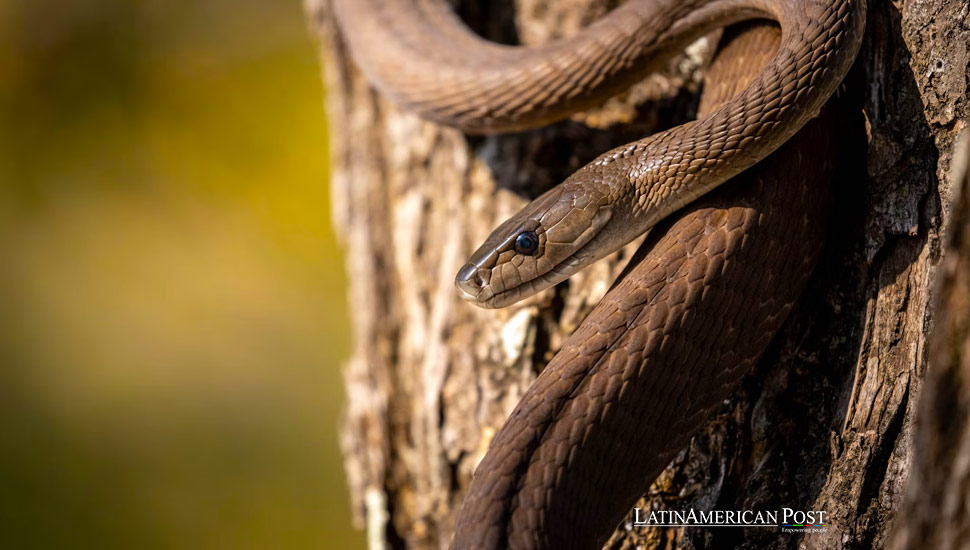Latin America Could Attack Snakebites with New Antidote

Latin America, a region teeming with biodiversity, is grappling with a pressing health issue-snakebites, particularly in rural areas. The urgency of this crisis is underscored by the fact that these incidents are often underreported, earning the designation of a neglected tropical disease. A new anticoagulant-based antidote could be a game-changer, but better healthcare infrastructure and education are equally crucial.
Latin America, a region celebrated for its lush rainforests, arid deserts, and sprawling savannas, is also home to some of the world’s most dangerous snakes. These venomous reptiles, especially those from the Viperidae family, pose a considerable threat to rural communities and nature enthusiasts. Coral snakes and pit vipers, notably from the genera Micrurus and Micruroides, are particularly dangerous, inhabiting many environments from the southeastern United States to Central Argentina.
Snakebites, or ophitic accidents, are frequent in Latin America, especially in rural and wilderness areas where human and snake habitats overlap. These incidents are often underreported despite their prevalence, earning the designation of a neglected tropical disease. Countries like Brazil, Costa Rica, and Colombia have extensive snakebite literature. Still, many nations in the region produce only sporadic reports that often fail to make it into official records.
Geographic distances to healthcare facilities and deep-rooted cultural beliefs significantly hinder the timely treatment of snakebites. In many communities, traditional remedies such as plant products and animal-derived ointments are the first line of defense. This reliance on unverified treatments can worsen the victim’s condition, delaying effective intervention with antivenom and increasing the risk of mortality.
Epidemiological Insights: A Regional Health Concern
Annually, the Americas record approximately 57,500 snakebites, resulting in around 370 deaths. However, due to underreporting and inconsistent data collection, these figures likely need to be more accurate to reflect the true extent of the problem. Brazil reports the highest number of snakebite incidents due to its vast size and diverse ecosystems, but other countries also face significant challenges.
According to data published by Chippaux, countries with higher incidences of snakebites per 100,000 inhabitants include Panama, Guyana, French Guiana, Venezuela, Costa Rica, Nicaragua, and Brazil. French Guiana and Guyana experience the highest mortality rates, while Bolivia reports the highest case fatality rate (CFR) at 4%, followed by French Guiana at 3%.
Data collection in Central America is more sporadic. Publications were available for six out of the seven countries, with Belize being the exception. Panama, Costa Rica, and Nicaragua reported mortality data, with Panama showing a lower CFR compared to the other two nations.
Scientific Advances: New Antivenom Developments
A ray of hope in the fight against venomous snakebites comes in the form of a promising scientific discovery. Researchers have found that the commonly used anticoagulant heparin could be a cost-effective and potent antidote against cobra venom. This ‘promising’ research, featured in Science Translational Medicine, was conducted on cells and mice by scientists from the University of Sydney and the Liverpool School of Tropical Medicine.
Cobras kill thousands of people annually worldwide, with many more suffering severe injuries due to necrosis caused by the venom. The current antivenom treatment is expensive and not very effective against tissue necrosis. However, the new research suggests that heparin could significantly reduce the severe injuries caused by necrosis and improve survival rates, providing a reassuring prospect for snakebite victims.
The research team used CRISPR gene-editing technology to identify ways to block the venom of the red-neck and black-neck spitting cobras. They found that heparin and related drugs can stop necrosis. Heparin acts as a decoy antidote, binding to the venom’s toxins and neutralizing them.
Three heparins used in the study are already approved as anticoagulants, including tinzaparin, the most effective heparinoid tested. These drugs could be injected near the bite site in community settings, potentially reducing the severity of envenomation long before patients reach a hospital. Nicholas Casewell of the Liverpool School of Tropical Medicine noted, “We hope to use heparinoids soon after a bite to reduce the severity of the envenomation.”
This discovery has the potential to revolutionize snakebite treatment in Latin America, where access to healthcare is often limited. By providing a readily available and effective treatment, the heparin-based antidote could save many lives and prevent severe injuries, inspiring a new wave of public health initiatives in the region.
Improving Access and Education
The primary obstacles to addressing the snakebite crisis in Latin America are geographical and cultural. Remote rural areas often lack the healthcare infrastructure needed for timely treatment. Additionally, cultural beliefs and practices related to snakebites can delay the decision to seek professional medical help.
To combat these issues, there is a pressing need for improved access to healthcare in rural areas. Establishing more healthcare facilities, enhancing transportation networks, and ensuring the availability of antivenom are critical steps. Furthermore, educational campaigns aimed at raising awareness about the dangers of traditional remedies and the importance of seeking immediate medical care can help reduce mortality rates.
One successful example of such initiatives is seen in Brazil, where educational programs have been implemented to teach rural populations about the risks of snakebites and the importance of prompt medical treatment. These efforts and better healthcare infrastructure have contributed to a lower CFR despite the high number of cases.
A Call for Comprehensive Solutions
The snakebite problem in Latin America is a complex and multifaceted challenge that demands a comprehensive, coordinated approach. The region can better address this neglected tropical disease by improving healthcare access, enhancing data collection, and fostering educational initiatives. Latin America’s diverse ecosystems and rich biodiversity are a source of pride, but they also demand respect and caution, particularly when it comes to navigating the habitats of venomous snakes. As efforts to mitigate the impact of snakebites continue, the goal remains clear: to save lives and reduce the suffering caused by these dangerous encounters.
Also read: Latin America’s Growing Use of WhatsApp and How to Stay Safe





